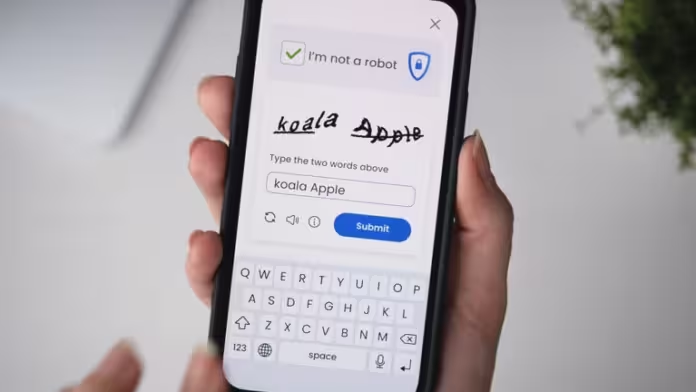Have you been annoyed while browsing online by a robot asking if you’re a human? Yes, it certainly does! You’re busy trying to find out something, and this disturbing element becomes a barrier.
This is where the CAPTCHA tests come into the picture, giving you an easy and quick task to verify whether you’re a human. Omg! But are you aware of what these CAPTCHAs are? Why is it so important to solve these puzzles or tasks while browsing?
In this blog, we’ll understand everything about CAPTCHAs. Keep reading!
What is a CAPTCHA?
A CAPTCHA (stands for Completely Automated Public Turing) is a test to determine if the user using an online platform, say a website, is really a human and not a bot. CAPTCHA is a kind of security check considering the growing number of bots and their malicious activities. Even though they are designed to block bots’ activities, CAPTCHAs are automated and programmed so that they appear on websites and test users.
Working of CAPTCHA:
Here’s how the CAPTCHA works:
The process is quite simple. It asks users to perform a particular task that an automated bot usually cannot do. If the user fails this test, they cannot browse the website further. If the task is completed, it sends a successful message, and they can continue their work. Some CAPTCHAs are difficult to guess. Thus, most users ask for new tests that are easy-going.
History of CAPTCHA:
CAPTCHA originated with Alan Turing’s Turing test in the 1950s. He conducted this test to determine whether machines could think like humans. The event came into being in the 1990s, and thereafter, the difference between humans and bots became crucial.
The journey continued, and in 1997, AltaVista developed a CAPTCHA-like system to block spam. However, the term “CAPTCHA” was not coined until 2003 by Louis von Ahn, who also coined reCAPTCHA and co-developed Duolingo.
Types of CAPTCHAS:
Text-Based CAPTCHA
The general format is text-based CAPTCHA, which combines digits and letters. Here, a text box appears on the screen with distorted letters, colors, dots, or lines that prevent bots from identifying you. When you open a new online account, you might see a text box with the letters you must pass.
Image CAPTCHA
One alternative to the text-based approach is image CAPTCHA. Here, users are asked to choose images that closely resemble the original. When the right one is identified, the user is a human, as bots cannot do so.
Word or math issues
The name says for itself! Math or word problems showcase the need for users to solve and enter the correct answer into the text box. This is another way to avoid bots.
Recaptcha
The first, meaning the original CAPTCHA formats are an easy-going option for the advanced bot, so they are now being replaced by reCAPTCHA. Google generally uses reCAPTCHA as an advanced test that offers high confidence between bots and human users. It uses real-world texts and images as sources or incorporates image recognition, behavior assessment, and checkboxes.
Advantages:
- Preventing automated bots from accessing websites.
- Help to reduce spam and fraudulent activity on websites.
- Protects login pages and online forms from brute force attacks.
- It supports the website’s integrity by ensuring only human users participate in the services.
Disadvantages:
- CAPTCHAs can be frustrating for users.
- It increases the time and effort to complete the transaction process.
- It may not be accessible to users with disabilities, limiting inclusion.
What exactly does CAPTCHA do?
The main aim of CAPTCHA is to confirm that the person trying to access a website is human and not a bot. Websites can stop bot activity using CAPTCHA technologies, leading to secure browsing and online experience.
Here are a few scenarios where you can see the CAPTCHA:
- When you’re making an online purchase
- Constantly opening many tabs
- In the process of gathering email addresses
Wrapping it Up
CAPTCHA plays a vital role in preserving the security and integrity of online platforms. Such technologies strike the right balance between user convenience and strong protection against cyber threats. Hope the above blog has helped you to clear all the concepts related to the same. For more information on such topics, visit YourTechDiet now.


